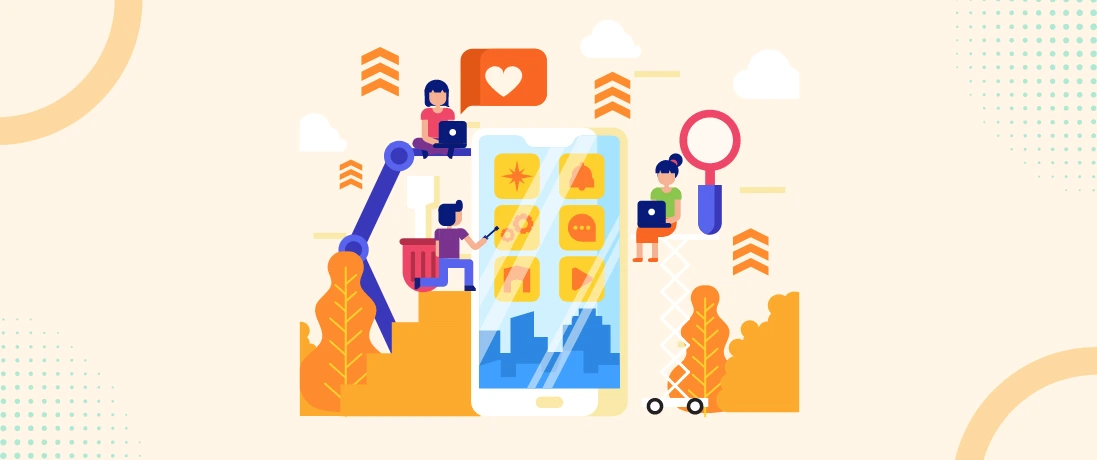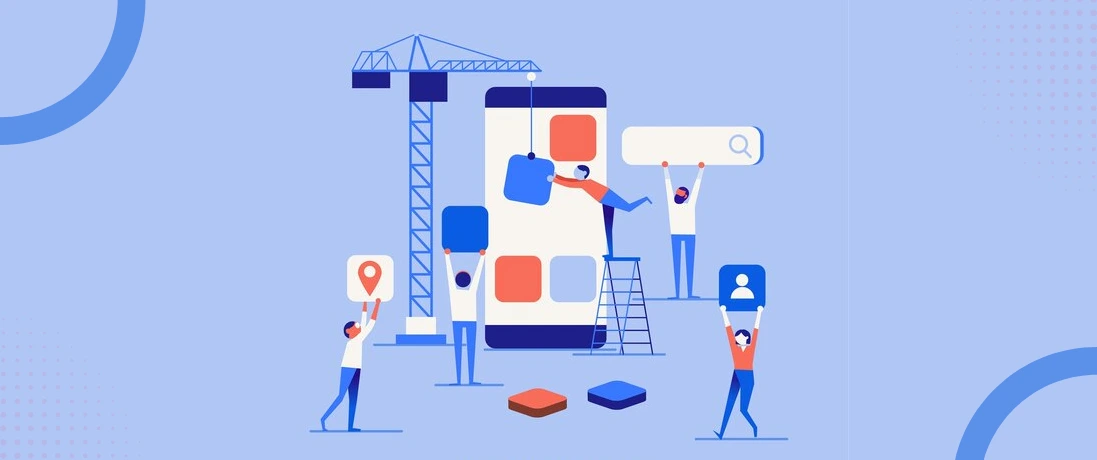How Long Does It Take to Build an App in 2025?
Introduction
Building a mobile app is an exciting venture. However, turning a brilliant app idea into a functional, market-ready product requires a deep understanding of the development process. With millions of apps already available in the market, launching quickly and effectively is essential for success. So, how long does it take to develop and launch an app in 2025? In this blog, we will break down the factors that affect app development timelines, the stages involved, and how to speed up the process.
App Development Timelines in 2025

The timeline for app development can vary greatly depending on the complexity of the app and the resources available. However, a general guideline can help you estimate how long it will take to bring your app to market.
- Simple Mobile App Development: 2–4 months
- Medium Complexity App Development: 4–6 months
- Advanced Mobile App Development: 9 months or more
These timelines reflect the different types of apps, ranging from basic apps with limited functionality to more complex, feature-rich platforms that require additional development and testing.
Key Phases in Mobile App Development
No matter how simple or complex your app is, there are certain stages that every app must go through. Here’s a breakdown of the key phases involved in app development:
Ideation and Planning
The first step in developing any mobile app is refining your idea. This phase involves defining the app’s core features, user base, and purpose. Thorough market research is done to understand competitors, market demand, and potential challenges.
Timeframe: This phase typically takes 1–2 weeks.
Design
The design phase is crucial for creating an engaging and user-friendly app. It includes wireframing, UI/UX design, and creating a prototype. The design of your app impacts how users interact with it and can determine the overall success of the app.
Timeframe: For basic apps, this phase could take 1–2 months. Complex apps with detailed designs can take longer.
Development
Once the design is finalized, the development phase begins. This phase can be divided into two parts:
- Front-end development: This covers everything users interact with, including the user interface and experience.
- Back-end development: This involves the server, database, and everything that powers the app.
Timeframe: This phase usually takes 2–4 months for simple apps and up to 6 months or more for medium to complex apps.
Testing
Testing is an integral part of the development process, ensuring the app functions properly and is free from bugs or glitches. A variety of tests are conducted, such as functional testing, user acceptance testing, and performance testing.
Timeframe: Testing usually takes 2–3 weeks for simple apps and can stretch up to a month or more for larger apps.
Launch and Post-Launch Support
After successful testing, the app is ready for launch. You submit the app to app stores like Google Play and the Apple App Store. After launch, ongoing maintenance, updates, and troubleshooting are essential to keep the app running smoothly.
Timeframe: The launch can take 1–2 weeks, depending on the approval process with app stores. Post-launch support is an ongoing phase.
Factors That Influence App Development Time
Several factors can either speed up or slow down the app development process. Let’s take a closer look at the most influential elements:

App Complexity
The more complex your app, the longer it will take to develop. Apps with basic functionalities like a simple to-do list can be developed quickly, while apps with advanced features like payment integration, chat functionalities, or real-time data syncing will take longer.
Design Requirements
A simple and straightforward design will be quicker to implement, while more intricate designs that require custom animations, transitions, and graphics may take longer to complete.
Platform Choice (iOS vs. Android vs. Cross-Platform)
Deciding whether to develop the app for a single platform (iOS or Android) or both (cross-platform) can have a significant impact on the timeline. If you’re developing for both platforms, the timeline will be longer due to the additional work required for cross-platform compatibility.
Development Team Expertise
Experienced developers tend to work faster and more efficiently. Working with a seasoned team can speed up the process as they will be familiar with the challenges and best practices of app development.
Third-Party Integrations
If your app requires integrations with third-party services, APIs, or external data sources, it may require extra time for setup, configuration, and testing to ensure these integrations function correctly.
Testing and Debugging
Thorough testing is necessary to ensure that your app functions smoothly on different devices and operating systems. This process can take time, especially if multiple iterations are required to fix bugs and optimize the app’s performance.
How Long Does It Take to Build Different Types of Apps?

The timeline for app development will largely depend on the app’s complexity. Here’s a breakdown of how long it typically takes to develop different types of apps:
Simple Apps (2–4 Months)
These apps offer basic functionality and don’t require a complex back-end or advanced features. Common examples of simple apps include calculators, weather apps, or a basic to-do list.
Features: Minimal features, basic UI/UX, no complex back-end.
Examples: Flashlight apps, to-do list apps, news apps.
Medium Complexity Apps (4–6 Months)
Apps that require user accounts, integration with third-party services, or more advanced functionality fall into this category. E-commerce apps, fitness tracking apps, or apps with chat functionality typically take around 4–6 months to develop.
Features: User registration, payments, notifications, social media integration, and user profiles.
Examples: E-commerce apps, fitness apps, social media apps.
Advanced Apps (9 Months or More)
These apps require custom development and complex features like AI, real-time communication, or advanced back-end integration. Such apps include ride-sharing apps, online banking apps, or apps with augmented reality (AR) and virtual reality (VR).
Features: Real-time updates, AI integration, AR/VR, multi-platform support, advanced databases.
Examples: Banking apps, ride-sharing apps, complex enterprise solutions.
Challenges That Could Delay Your App Development Process
While timelines can be estimated, unforeseen delays are common in app development. Here are a few challenges that may arise:
- Unclear project requirements: If the project scope is not well defined from the start, developers may face confusion, leading to delays.
- Feature creep: Adding extra features during development can increase the timeline, especially if these additions are not part of the original plan.
- Testing delays: Insufficient testing or bugs discovered late in the process can slow down the launch.
Tips to Speed Up App Development
While there will always be challenges, there are strategies you can implement to speed up the app development process:
- Define Clear Requirements: Set clear, detailed goals for your app from the start to avoid unnecessary changes later in the process.
- Use Pre-Built Solutions: Take advantage of frameworks and libraries to save development time for common features.
- Collaborate with Experienced Developers: A well-experienced development team will help avoid mistakes and streamline the process.
- Prioritize Core Features: Start by developing the most important features first and plan to release additional features later in updates.
- Continuous Testing: Incorporate testing throughout the development process to catch and fix bugs early.
Conclusion
The time it takes to build an app in 2025 depends on factors like complexity, design, and development team expertise. Simple apps may take a few months, while more complex ones can take up to 9 months or longer.
At Innow8 Apps, we help turn your app ideas into reality, ensuring timely delivery and high-quality results. Whether it's a simple app or a complex platform, our expert team is here to guide you through the process.
Ready to launch your app? Contact Innow8 Apps today and let's get started!
FAQs
Are these timelines shorter or longer than previous years?
Generally, in 2025 we see that the timeline can be potentially shorter than in prior years due to:
- Increased use of Low-Code/No-Code platforms: These tools significantly speed up development for certain types of apps.
- Improved Frameworks and Libraries: Modern development tools are more efficient, allowing developers to build faster.
- AI-Powered Development Aids: AI is increasingly used for tasks like code generation, debugging, and testing, further speeding up the process.
- Better Project Management Tools: Mature tools help teams collaborate more effectively and stay on schedule.
However, complex projects will always require significant time, technology advancement or not.
Does choosing a mobile-first, web-first, or cross-platform approach affect the timeline?
Yes, it can:
- Native Mobile (iOS/Android separately): Offers the best performance and access to device features but requires building separate apps, often increasing the overall timeline and cost.
- Web-First (Progressive Web App): Can be quicker to develop initially, with a focus on a single codebase, but may have limitations on accessing native device functionalities.
- Cross-Platform (e.g., React Native, Flutter): Can potentially shorten the timeline by allowing you to use a single codebase for multiple platforms, but may come with its own complexities and specific limitations.
Transform your business with expert enterprise software solutions. Start now!
Recent Blogs:

Top 8 Advantages of On-Demand Apps | Build an...
On-demand apps- Looking to take your business to next level? checkout these top 8 advantage ...
Read MoreCost to build an Instant messaging app like w...
Discover the estimated cost to build an app like WhatsApp in 2024. Explore its features, tim...
Read More
How can AI revolutionize the Game Industry?
Discover the different ways of AI that can revolutionize the game industry and create superi...
Read More